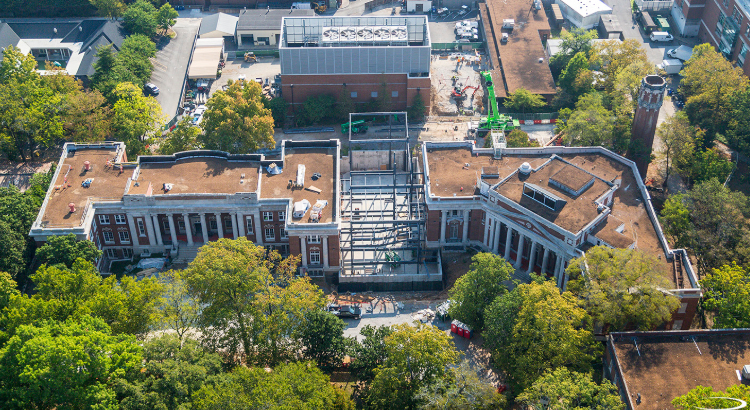Upon the Kendeda Building’s completion, we asked a few prominent change leaders in sustainability and other fields to offer their insights. At the heart of all their columns: What should and can be done to encourage regenerative design and construction. Read more of these Building Thought Leader columns and other content tied to completion of this landmark for sustainability in the Southeast here.
Vanderbilt University is an environmental leader in Nashville, and the Living Building Challenge certification is another avenue for the university to pursue in its efforts to foster a healthier, more sustainable environment for its students, faculty, staff and the surrounding community. Currently, Vanderbilt is pursuing a Petal Project certification through the Living Building Challenge in the university’s Peabody College neighborhood. This effort has created various opportunities for the university to engage with its surrounding community.
Earlier this year, the university held its third event in a local series titled “Making Nashville Living Building Ready,” which is aimed at discussing how the Nashville community can take steps toward creating its own Living Buildings. The event used the Kendeda Building as a case study to discuss how that project is utilizing highly efficient, sustainable materials to help create the first net-positive building of its size and occupancy in the Southeast,

Vanderbilt is working to promote the development of Living Buildings in Nashville, and the Kendeda Building demonstrates that a large-scale Living Building is possible in the Southeast despite climate challenges, such as the need for year-round heating and cooling. As more leaders like the Georgia Institute of Technology and the Kendeda Fund pursue regenerative design in their developments, the knowledge base and strategies used to overcome these challenges in the Southeast will continue to grow.
The Petal Project in Vanderbilt’s Peabody neighborhood has allowed the university to address other challenges as well. More specifically, the team figured out how to renovate an older, energy-inefficient building such as the Frank W. Mayborn Building in a way that aligns with the Living Building Challenge’s goals while maintaining the historic character of the structure. The Vanderbilt Campus Planning and Construction team is pursuing four of the seven Living Building Challenge “petals,” or sustainability categories, including the Materials, Beauty, Equity, and Health and Happiness categories.
The challenge requires the team to find a balance between preserving old elements and creating new efficiencies. To involve the Nashville community, Vanderbilt is contracting with local businesses to refurbish the original wood flooring and reinstall it elsewhere within the project. Updating HVAC systems with variable refrigerant flow with a dedicated outside air system, and constructing the building for eventual solar power, are just two ways the team is achieving the Living Building Challenge goals. The spirit of old and new is embodied in the design of the glass-and-steel atrium in the new connector building that links the Home Economics and Mayborn buildings, which illustrates that the campus can maintain its historic feel while simultaneously becoming more sustainable and equitable. As communities continue to evolve and change in the Southeast, fostering sustainability through initiatives like the Living Building Challenge will inspire other organizations to adopt similar strategies.
Visit Vanderbilt’s FutureVU site to learn more about Vanderbilt’s plans for the future of campus.
Keith Loiseau is Vanderbilt’s University Architect and Director of Design and Construction. In his 23 years at VU has overseen building, infrastructure and master-plan projects totaling over $1.8 billion and 4 million square feet, with a focus of optimizing cost of ownership, quality and schedule. A passionate supporte of sustainability, he has championed 21 LEED certified projects with six in development, TN’s first WELL building in certification and VU’s first Living Building petal project in construction.
PHOTO AT TOP: Aerial view of construction on the Living Building Challenge Petal project at Vanderbilt University’s Peabody College. Courtesy Vanderbilt University.


